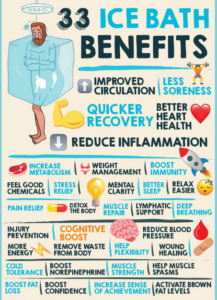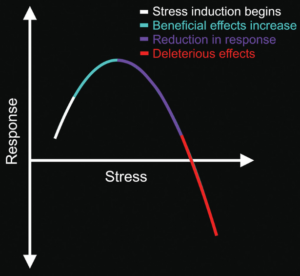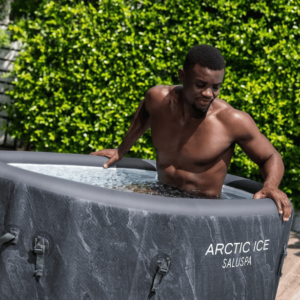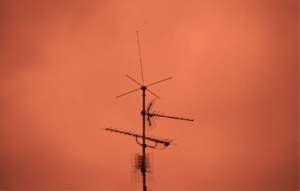Cold plunges have taken the fitness world by storm, and for good reason. Athletes, influencers, and weekend warriors alike are swearing by them for recovery, mental health, and inflammation control. But as with any powerful tool, there’s a right and wrong way to use it.
While cold exposure can be incredible for mood, inflammation, and resilience, improper use can actually hinder performance, slow muscle growth, and contribute to systemic fatigue. Many athletes don’t realize that plunging straight into an ice bath after training could be limiting their gains rather than enhancing them.
So, should athletes abandon cold plunges altogether? Not at all. The key is using them strategically – like with any other tool. This guide breaks down the benefits, risks, and best practices for making the most of cold exposure without compromising on your goals.
The Benefits of Cold Plunges for Athletes
Mood & Mental Toughness
Cold exposure triggers a massive increase in dopamine and norepinephrine, two neurotransmitters linked to mood, focus, and motivation. Some studies show dopamine levels can rise by 250% after cold immersion, creating a lasting boost in mental clarity and resilience.
For athletes, this means better focus in training, increased mental endurance, and improved recovery from stressful competitions. It also helps develop grit – getting into freezing water daily isn’t exactly comfortable, and pushing through discomfort can translate to better performance on the field or in the gym.
Inflammation & Recovery
Cold exposure is well known for its anti-inflammatory effects. Research on cold-water immersion has found evidence that it helps reduce the degree of exercise-induced muscle damage that can occur after physically challenging activities. Less damage leads to less inflammation, which in turn reduces soreness and helps restore physical performance the next day, and even allows for more performance after the plunge. This is why professional sports teams often use ice baths post-game to help athletes recover faster.
By limiting muscle damage, cold plunges can help athletes maintain a higher level of performance over back-to-back days of training or competition. The thing is though, the reduction in inflammation can interfere with the natural repair and adaptation process that is essential for muscle growth, making the timing of cold plunges crucial – this is something that a lot of recreational athletes miss out on.
The Potential Downsides: Why Athletes Need to Be Careful
Cold Plunges Can Blunt Muscle Growth
One of the biggest reasons athletes need to be strategic with cold exposure is its impact on muscle hypertrophy.
After training, muscle fibers undergo microtrauma/microtears and inflammation, which signals the body to repair and grow stronger. This is a necessary part of adaptation. However, cold plunges immediately post-workout can suppress this natural inflammatory response, reducing muscle protein synthesis and limiting growth.
Solution: If muscle growth is a priority, avoid cold plunges right after strength training. Instead, wait at least 4-6 hours post-workout or save them for rest days.
Cold Plunges Can Add to Systemic Fatigue
Cold exposure is a stressor. While this can be beneficial in small doses (hormesis), excessive stress can lead to burnout.
Athletes already experience significant neurological load from training, competition, and daily life. Adding frequent cold plunges on top of this can lead to overactivation of the sympathetic nervous system, increasing fatigue, reducing recovery, and potentially contributing to overtraining syndrome. Additionally, while cold exposure has been shown to boost immune function in the long term, excessive use can have the opposite effect. If the body is already dealing with high stress, too much cold immersion may suppress immune resilience, making athletes more susceptible to illness rather than strengthening their defenses.
Solution: Listen to your body. If you’re feeling constantly fatigued, limit cold exposure. Consider using it more on active recovery days rather than on top of an already intense workload. Again, looking at hormesis, sometimes a bit of extra stress is good, but only if you can adapt properly – it’s all about balance.
Cold Plunges Are Not Ideal Pre-Workout
Some athletes believe that cold plunges before training can enhance performance by increasing alertness. While it’s true that cold exposure boosts norepinephrine and focus, it also causes vasoconstriction, reducing blood flow to muscles. This can impair elasticity, power output, and overall strength.
Solution: If you want to use cold exposure for a mental boost pre-workout, opt for contrast therapy (hot-cold contrast showers) or brief facial immersion rather than full-body plunging.
Cold Plunges Can Disrupt Sleep
While cold exposure can enhance resilience and recovery, it also boosts alertness. The spike in norepinephrine and other stress hormones may make it harder to wind down for sleep, especially if done too close to bedtime.
Solution: If you train in the evening, avoid cold plunges late at night unless you keep them short (1-2 minutes) and finish with warming techniques afterward.
Best Practices for Using Cold Plunges as an Athlete
Now that we’ve covered the pros and cons, let’s talk about how to actually use cold plunges effectively as an athlete.
If Muscle Growth Is the Goal
- Avoid cold plunges immediately post-strength training.
- Wait at least 4-6 hours after lifting before plunging.
- For the above reason, it’s often best used on rest days rather than workout days.
For Recovery & Inflammation Control
- Ideal after intense training days or competitions.
- Use brief (3-5 minute) sessions to avoid over-suppressing inflammation.
- Contrast therapy (alternating hot and cold) can be a good alternative.

To Avoid Nervous System Overload
- Use sparingly during heavy training periods.
- If feeling drained or fatigued, take a break from cold exposure.
- Limit frequency to 2-4 times per week instead of daily if recovery is struggling.
For Mental Toughness & Mood
- Use in the morning for a lasting dopamine and resilience boost.
- Even short plunges (1-2 minutes) can be effective.
- Pair with breathwork to improve cold adaptation.
Timing Considerations
- Morning: Great for alertness, resilience, and dopamine.
- Pre-workout: Not ideal for strength/power but may help with focus and energy if brief.
- Post-workout: One of the best things for reducing soreness, but avoid if muscle growth is a priority.
- Night: Avoid too close to bedtime to prevent sleep disruption, try to not plunge within 2 hours of winding down so that your body has time to regulate its temperature.
Conclusion
Cold plunges are extremely trendy right now, but they’re not just another overly-hyped fitness fad that will fade – they’re a legitimate tool for recovery, resilience, and performance. However, their effectiveness definitely depends on how they’re used.
Athletes should avoid plunging immediately after strength training if hypertrophy (muscle growth) is a priority, be mindful of neurological and immune system fatigue, and limit frequency during high-stress periods. Used strategically, cold exposure can enhance mental toughness, reduce inflammation, and improve overall resilience.
The key takeaway here? Cold plunges aren’t inherently good or bad. They’re a tool – and like any tool, they work best when used correctly. If you want to get the most out of them without compromising your performance, pay attention to timing, intensity, and overall stress load.
So go ahead, take the plunge – but do it wisely.








